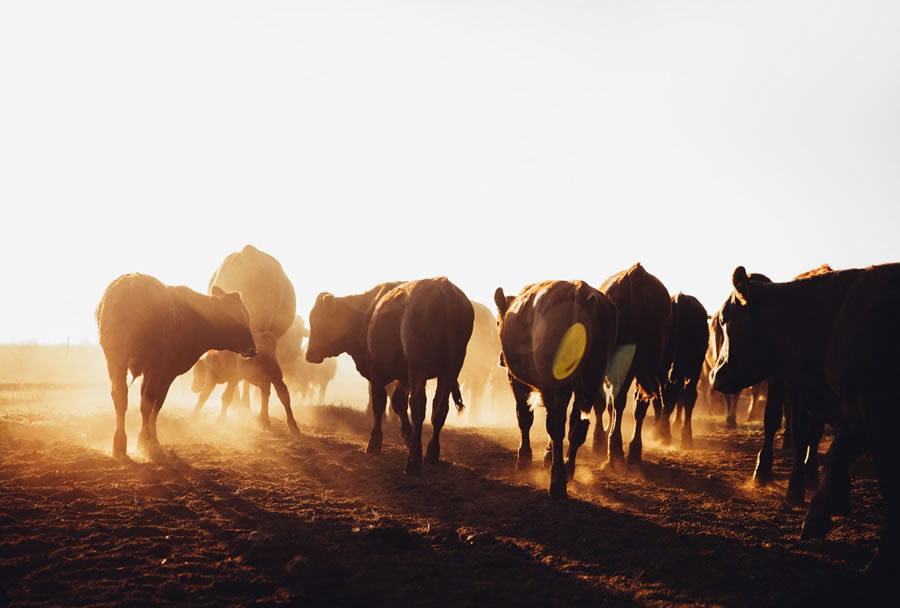
Challenges in Maintaining Integrity of USDA Organic Standard

Dairy products, especially milk, can cost twice the amount of conventional milk when it is USDA Organic certified. Consumers can tend to overlook the cost when they feel that the product is worth it. However, more research into product sources may be needed to ensure that the product is exactly what it says it is. In the case of organic milk, cows are supposed to be grazing in fields daily in order to be compliant, but inspectors sometime visit farms in winter months when the cows aren’t out grazing and would therefore not get an accurate picture of the cow’s habits. Aninvestigationby the WashingtonPost of a particular dairy farm found that “the inspectors conducted the annual audit well after grazing season — in November. If organic farms violate organic rules, consumers are being misled and overcharged.”
High resolution satellite photos also showed that no more than 10% of the farm’s herds were grazing. The investigation also found that laboratory testing on a key indicator of grass-feeding demonstrated that the milk produced by this facility matched other conventional varieties, not organic.
Organic eggs have also become problematic in that different agencies follow different guideline of what is organic and what is not, including whether the hens are exposed to fresh air through an open window or porch, or are physically outdoors. TheWashington Poststated that “in a striking measure of confusion within the USDA Organic program, even the inspection agencies that certify organic farms don’t agree on whether keeping the hens confined to barns with porches should be considered ‘organic.’” Its report details the conditions on an egg operation that houses 180,000 hens in a facility that crams three hens per square foot and no access to the outdoors except for “porches.” The USDA organic label on eggs has become confusing as a result and unless you physically go to the farm site to see the conditions the hens are living in, it can be difficult to trust that the products are exactly what they claim to be. It also creates a disadvantage for organic farmers who are letting their hens outside at a greater cost to their business.
In the grain industry, it has become increasingly difficult for the U.S. Department of Agriculture to trust that grains that are being imported into the U.S. are organic under the same guidelines the U.S. has in place. In recent years, organic farmers in the U.S. have had a decrease in sales due to increases in “organic” grains being imported into the country. The products coming in are more difficult to regulate and what appear to be massive amounts of grains that are supposed to be organic that are imported don’t seem to be from the originating farms.
TheChicago Tribunereported that Sen. Pat Roberts, R-Kan., chairman of the Senate Agriculture, Nutrition and Forestry Committee stated, “It seems that uncertainty and dysfunction have overtaken the National Organic Standards Board and the regulations associated with the National Organic Program. These problems create an unreliable regulatory environment and prevent farmers that choose organic from utilizing advancements in technology and operating their business in an efficient and effective manner. Simply put, this hurts our producers and economies in rural America.”
In response, the USDA has been decertifying certain companies that were found to be non-compliant to requirements and there has be a request to have more enforcement in these areas to ensure product reliability. There is also talk of having USDA staff in ports overseas to help police the issue as well.
The market of organic and natural products has expanded rapidly in a relatively short period of time. The struggle that certifying agencies are having in keeping up with the regulation and policing of policies and procedures of organic and natural farms has become common knowledge and steps are being taken by these agencies to resolve the issues. In the meantime, retailers should be more vigilant in their research of product sources and production so that they can be assured that they are obtaining the advertised products.

The editorial team at WholeFoods Magazine has decades of experiences reporting on natural products industry news, trends, and more. This national, monthly business-to-business magazine has been published continuously for nearly 40 years (the magazine was founded in 1977, and has been owned by Wainer Finest Communications since 1984). It is the longest-tenured media outlet of its kind in the natural products industry. The editorial focus at WholeFoods Magazine is, and always has been, on informing and educating members of the natural products industry.
The Magazine
Information
About Us
NOTE: WholeFoods Magazine is a business-to-business publication. Information on this site should not be considered medical advice or a way to diagnose or treat any disease or illness. Always seek the advice of a medical professional before making lifestyle changes, including taking a dietary supplement. The opinions expressed by contributors and experts quoted in articles are not necessarily those of the publisher or editors of WholeFoods.







